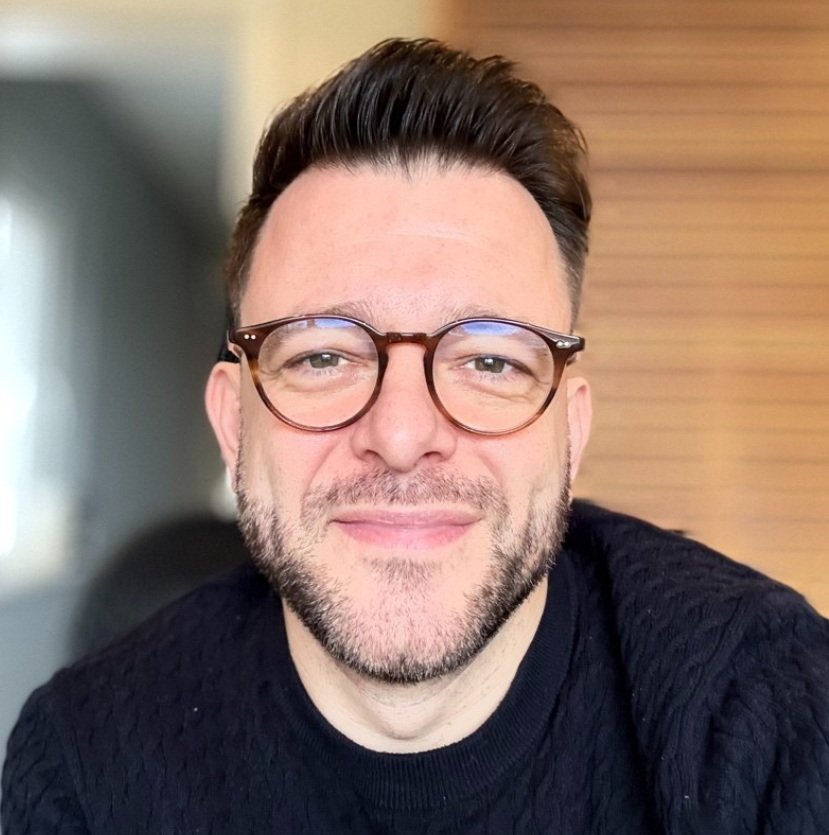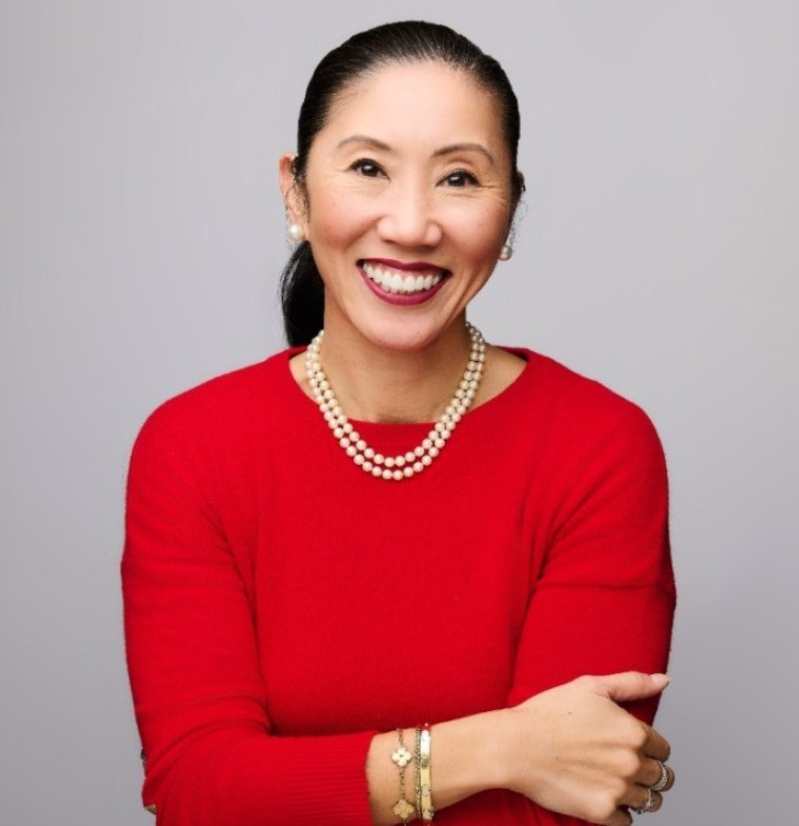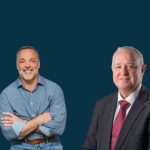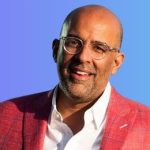“I didn’t necessarily see myself coming back to a law firm and there aren’t many that I would have come back to, but this is a role that doesn’t exist elsewhere.”
Chris Grant is talking to me about his still new role as head of client value at Goodwin, working in tandem with chief operating officer Mary O’Carroll to drive transformation at the Am Law 20 law firm. Grant, a well-known figure in the legal sector, was previously head of legal market engagement at HSBC and before that managed external relationships at Barclays. In both roles he led panel management and has for years been a highly vocal advocate for change in law firm pricing.

“This role bridged the gap of everything I’ve been talking about from the client side and everything I’ve been trying to get law firms to do. It’s an opportunity that presents that chance to become client-centric and think about what a law firm needs to deliver and how it can step away from the shackles of the billable hour, free training, free secondments and all those things that are stuck in the past,” he says.
Head of client value is a new role for the firm, and it spans finance and business development, with Grant working with partners to help define how Goodwin will operate going forward. Grant says: “It’s an engaging and exciting place to be and I can categorically say that Goodwin is driving change at pace. I’ve spent my first few months talking to our partners and having game changing conversations. There’s not one that doesn’t have the energy to do things in a different way.”
Much of Grant’s focus is on how to price work in the right way, including how to move away from the billable hour. It’s a conversation that can often elicit a chuckle. I personally have written about the death of the billable hour since 2004. In the industry at large, there is a sense that we are on the cusp of real AI-driven change, but translating that into actual change is hard.
Interestingly and speaking bluntly, clients can often be part of the problem, but part of Grant’s remit is to speak to clients and try to solve the problem together. He says: “We’re talking to clients about how we can do things better and how they are operating; where they are on their journey; and what they want to do next when it comes to pricing. Are they ready to do things differently? We’re thinking about it all.”
The only way that pricing changes can work is this way – in partnership with clients, who are often criticised for demanding alternative fee arrangements and then asking to see how that breaks down in six minute units. Having been a client, Grant clearly understands the frustrations and the limitations.
 The same can be said for Goodwin’s chief operating officer Mary O’Carroll, who hired Grant into this new role. O’Carroll was previously chief community officer at Ironclad and before that director of legal operations, technology and strategy at Google, spending 11 years as a member of CLOC, including a five-year tenure as its president. She has seen both side of the fence, having started her legal career in private practice, as a strategy and operations manager at Orrick, and tells me: “This is the culmination for me of a 20-year journey. It’s something that both Chris and I have been passionate about for a really long time. Since I entered a law firm 20 years ago, my view is that the law firm model is fundamentally at odds with customers and misaligned.”
The same can be said for Goodwin’s chief operating officer Mary O’Carroll, who hired Grant into this new role. O’Carroll was previously chief community officer at Ironclad and before that director of legal operations, technology and strategy at Google, spending 11 years as a member of CLOC, including a five-year tenure as its president. She has seen both side of the fence, having started her legal career in private practice, as a strategy and operations manager at Orrick, and tells me: “This is the culmination for me of a 20-year journey. It’s something that both Chris and I have been passionate about for a really long time. Since I entered a law firm 20 years ago, my view is that the law firm model is fundamentally at odds with customers and misaligned.”
She adds: “The whole journey with CLOC and Google was about trying to get law firms to understand what our new needs are. Now we’ve been given the opportunity to think about how to be the firm of the future.”
O’Carroll says that one of her first priorities was to create a client value role. Pricing roles are by no means new to law firms, but O’Carroll says: “This is more than pricing. We have great firm partners who are excited about building the firm of the future and in hiring Chris I said to myself ‘who is spending all their time thinking about this, and who can educate partners about what value looks like; about what more do they want than legal service; about what does a real partnership look like?’ We put Chris through the ringer and he’s a great fit and has already had a huge impact on the firm.”
Creating meaningful change in law firms has defeated even the most committed and excitement can only take you so far, but O’Carroll and Grant have lived through that on the other side. O’Carroll says: “It would have been ‘hell no’ to going back to a law firm but you need three things, strong vision; a partnership that is actually bought in and believes and wants to do this; and the ability to execute, so an operations team that can make it a reality. Here we have all three ingredients: the partners aren’t saying ‘no’, but ‘tell me more.’”
It makes a difference that Goodwin isn’t at the start of its transformation journey. Last year, Goodwin was recognised in the Financial Times’ Innovative Lawyers North America 2024 Report and shortlisted for the ‘most innovative law firm’ category. Goodwin’s previous COO Michael Caplan won many awards for revamping the firm’s business operations and consulting services.
Grant says: “The momentum is already happening, and they are already bringing in the right people. That is what resonated with me. It’s not the start of the journey.”
Successful transformation is about culture and strategy, not really about tech in the first instance, albeit that technology has and will continue to underpin a lot of the change going forward at Goodwin.
O’Carroll says: “We have been focused on making the firm a safe place to take risks. We’re making it OK to experiment and move quickly with moving forward without perfect information. We keep talking about agile: try things, then pivot.”
Once again, this is obviously so much easier said than done, but at Goodwin there have been some exciting substantive changes to create that agile environment. O’Carroll says: “We have changed written job expectations to include creativity, initiative, risk taking and thinking outside of the box. This is a whole mindset and we are hiring, evaluating, demanding and celebrating those that are doing it, over and over again. When we started out, we did an all hands meeting and people said, ‘Do you really mean it, will we get in trouble if we get things wrong?’ And I said, ‘try me.’”
Given this hugely encouraging environment, are Grant and O’Carroll prepared to make bold forecasts on the timeframe in which pricing will completely change at the firm?
Grant says: “In three years we’ll have done more than you’ve seen from any law firm in a long time and moved the needle on lots of things. We will have changed the way we price, will have put clients at the forefront and they will be at the heart of where we’re moving.”
He adds: “I’d be amazed if the billable hour is still floating around in the next five years. We’ve been trying to get that to happen for long enough. We already have clients very focused on alternative fee arrangements. We’re here to change things and that is one thing that we all agree on.”
Grant’s experience of how to move law firms off hourly rates will come heavily into play and he says: “You can’t just flick a switch. At the bank we were able to make much more impact in litigation, for example, by introducing more accurate metrics, better mechanisms, and more phases. If there was going to be a motion to dismiss, will it be closed by the end of the year? We had great conversations and created a pricing menu.”
Grant will also be working with clients to create a lab. At Barclays he was head of Eagle Lab – an incuabor that helped drive success for startups such as Office & Dragons (acquired by Litera last year) and GenieAI, which last year raised £13.3m in investment.
“I love a lab!” says Grant. “It’s all about how can we develop think tanks? How do we make sure we are getting clients ready for change on that pricing side and developing our pricing menus and those fundamental foundations? A lot of what we do from a tech perspective will rely on that now Mary has done a great job of pulling together an awesome team that can deliver.”
Will AI play a big part in the tech side of things? “It will enable us to be more client-centric,” says O’Carroll. “This is the lens we’re looking through: how do we align ourselves better? How do we deliver client value? The things that we’re working on from a data perspective and AI perspective are all around how we change how we operate and go to market, so we can be the firm of the future.”
O’Carroll has a strong tech background and says: “AI to me is just another tool. It means we can do things better and faster. We’re sitting on mountains of data to help us operate better and deliver more insights, trends, information and strategy to the client, and then you start to think ‘is our business model aligned or at odds with that?’”
So what announcements can we look for as Goodwin works on further aligning its business model? O’ Carroll says: “Everyone knows the changes that need to happen in this industry but say they will never happen. Without getting into specifics, watch this space. We’re going to do all of them, and nothing is off limits.”









